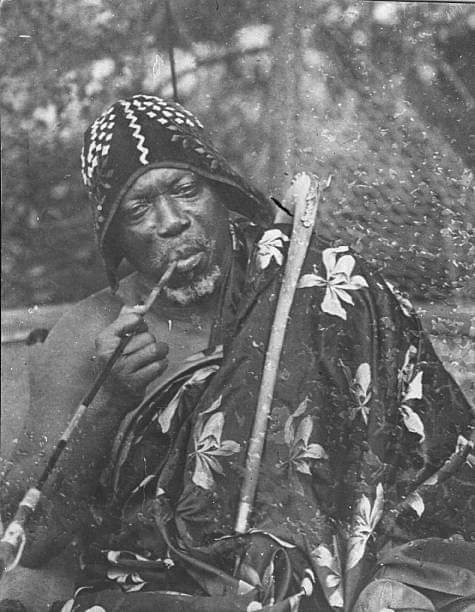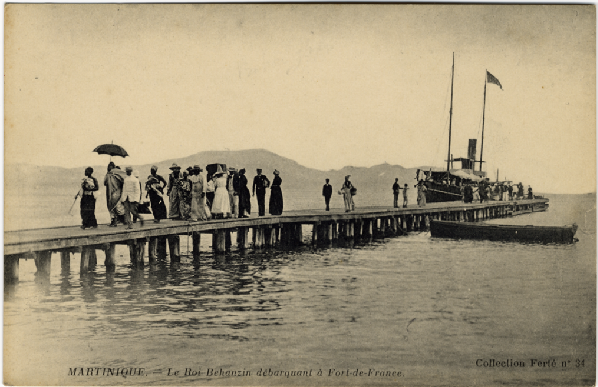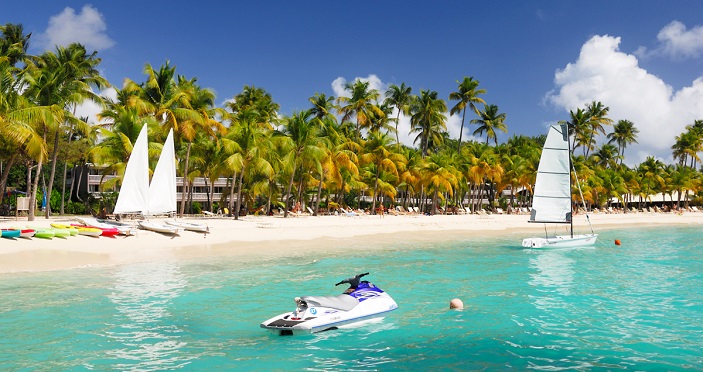
Did you know? King Behanzain was the 11th and last king of the Dahomey empire and an undoubtedly certified African legend. Perhaps you’ve heard of him, or seen him with his famous smoking pipe- which he claimed that even as a baby, there wasn’t a minute in his life where he was not smoking. Born under the name of Kondo, he was later coronated King Behanzin, meaning ‘the egg of the world and the son of the shark.”
In 1889, Behanzin succeeded the throne to his father, Glele. Shortly after the death of his father and his inauguration, Behanzin led his army into battle against the quickly encroaching French, a battle that would ultimately lead to the fall of Dahomey, one of the last traditional African kingdoms. King Behanzain is remembered for the devotion he held for his homeland and the heroic resistance he led against the French colonial forces.

The Kingdom of Dahomey
The Dahomey Kingdom, present day Benin, was known for it’s military prowess, extensive trade networks, and for being one of the most powerful kingdoms of West Africa. Behanzain’s army was made up of 15000 men and 5000 women, an all female regiment referred to as the “amazonas” for their similarity to the mythical Amazons of ancient Anatolia, which he led to battle in resistance to France’s attempts to expand their colonial territory.
The battle lasted four years, finally ending with French victory over Dahomey, one of the last standing African kingdoms. Faced with defeat, Behazain surrendered and was consequently exiled, spending the remainder of his life in Martinique and Algeria until his death in 1906.
Following the defeat of his army, Béhanzin surrendered to the French and was placed as a political prisoner under the responsibility of the French colonel Alfred Dodds. In determining the place of exile for Béhanzain, Dodds debated between Senegal and Gabon. Realizing that Béhanzin’s continued presence on the continent would not diminish his influence, Dodds made the ultimate decision to exile Béhanzin and his family to the island of Martinique.

Exiled in Martinique
On March 30, 1894, Behanzin and his family were deported to Martinique and housed at Fort Tartenson. Numerous testimonies recall first encounters with the king. Prior to meeting with Béhanzin, visitors had to obtain authorization from the government of Martinique. Once approved, visitors arrive at the Fort, where Béhanzin would receive them, seated on his chair and smoking his pipe.
An article published in Le Petit Parisien on July 10 of 1895 noted that Béhanzin did not adapt well to Martinique’s climate and all those who visited it remember that the king never seemed to be warm enough. For health reasons, the king later requested a new residence. This request was granted by the French government and Béhanzin was subsequently transported to Algeria in Blida, “the city of roses” where he lived in the Villa de les Bosquets, far from his homeland, until his death December 10 of 1906 Béhanzin remains buried in the Saint-Eugène cemetery in Algiers.





